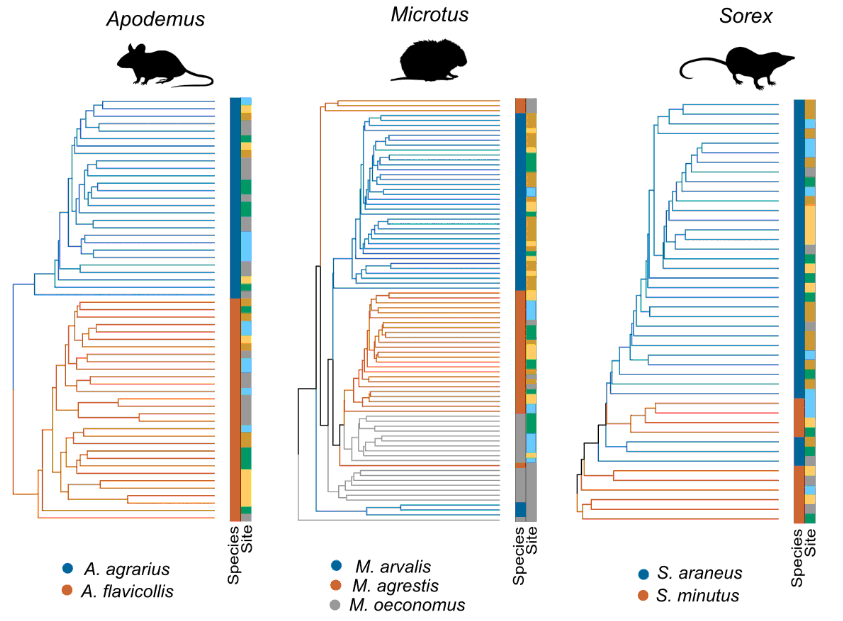
Phylosymbiosis
Different host species often harbour characteristic symbiont communities. Moreover, in some animal groups, ‘phylosymbiosis’ has been observed, whereby symbiotic community composition mirrors the host phylogeny.
Recently, we showed that host phylogeny dominated over a shared environment in shaping the gut microbiota among closely related (congeneric) small mammals (Figure 1). We also found that only certain members of the microbiome were responsible for driving species-specificity in the microbiota [1]. Such phylogenetic signals in the microbiota are increasingly documented, yet we do not yet understand the driving mechanisms. We are now interested in probing the evidence that wild vertebrates and their gut microbes codiversify, and asking why some symbiotic microbes show more evidence for host-specificity and codiversification than others.
References
- Knowles S, Eccles R, Baltrūnaitė L. Species identity dominates over environment in shaping the microbiota of small mammals. Ecol Lett 2019. doi:10.1111/ele.13240.
Figure 1: Gut microbiota structure clusters more strongly by species than capture site in three small mammal genera

From Knowles et al. 2019